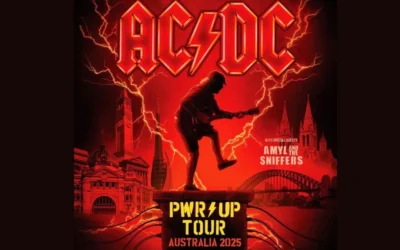A team that loses almost 800,000 fans in a two-year span — in a stadium that is just three years old — has little choice but to modify its approach to lure the paying public back to the game, even if it means doing the complete opposite of what it used to do.
Such is the case with the New York Mets, who drew 2,352,596 fans to Citi Field last season, down from 3,168,571 in the facility’s debut campaign in 2009. As part of their efforts to boost those figures, the Mets have pulled in the fences in both left field (where the fence is 13 feet closer, from 371 to 358, to home plate) and right field (from 415 feet to 395 feet) and lowered the left field fence from 16 feet to 8 feet.
The new-found space behind the left field fence has been turned into the “Party City Deck,” where there is space for 102 fans who can pay between $100 and $200 for tickets that include food and beverages. The area will be reserved for groups of 25 or more after the season-opening homestand concludes Wednesday, April 11.
Three games into the season is an awfully small sample size, but the changes are paying off thus far for the Mets, who welcomed 109,461 fans through the turnstiles and swept their opening three-game series against the Atlanta Braves from Thursday, April 5 through Sunday, April 8.
The Mets hit three homers in their 4-2 win Saturday, April 7 — which is notable, considering STATS LLC reports an average of 1.43 homers were hit per game at Citi Field during its first three seasons, the lowest figure in baseball in that span — while pitcher Jonathan Niese flirted with a no-hitter in the series finale.
A Citi Field-record 42,080 fans showed up for Opening Day (in addition to the Party City Deck, the Mets added 45 seats beyond the right field deck to increase the stadium’s capacity to 41,922) and the Mets drew another 39,526 for the middle game of the series on Saturday, which marked the first time since 2009 that the Mets played to crowds of at least 39,000 in consecutive home games. (All attendance figures from Baseball-Reference.com)
“We decided that an adjustment was in order,” Mets executive vice president for business operations Dave Howard told reporters during a tour of the revamped Citi Field Tuesday, April 3. “We came in hoping to make it a pitcher-friendly park, but maybe it was too friendly for pitchers. Bring your gloves, there are going to be a lot of home runs hit here.”
“Scoring creates excitement.”
Such a philosophy runs counter to the pitching-first mantra espoused by the Mets for most of their first 49 years of existence. Shea Stadium, the Mets’ home from 1964 through 2008, was considered a pitcher’s park, and Citi Field was also built with the pitcher in mind.
Three subpar years at Citi Field was enough for the Mets to adjust their thinking. The Mets hit just 331 homers the three previous seasons, including 95 in 2009, the team’s fewest since 1992, according to The New York Times.
The Times also reported that Mets chief operating officer Jeff Wilpon blamed former general manager Omar Minaya for the hitter-unfriendly dimensions at the new facility. “Omar spoke about pitching, speed and defense all the time,” Wilpon told the Times last October 2011.
It would have been particularly ironic if the Mets finally threw the first no-hitter in franchise history Sunday in their newly hitter-happy home park. Alas, Niese gave up a hit with none out in the seventh, extending the Mets’ streak of no-hitters to 7,191 games, according to The Associated Press.
While the Mets entered 2012 a combined 34 games below .500 since moving into Citi Field, their big problem the last three years has been public relations. Owner Fred Wilpon was a longtime friend of and investor with Bernie Madoff and was sued for $303 million by a lawyer representing the victims of Madoff’s Ponzi scheme. Wilpon and his brother-in-law, Saul Katz, settled the lawsuit in March 2012 by agreeing to put $162 million into a fund for those victims.
The uncertainty created by the lawsuit forced the Mets to pare payroll by almost $50 million after last season, and left them unable to even make an offer to retain shortstop Jose Reyes, who spent the first nine seasons of his career with the Mets but signed a six-year, $106 million deal with the Miami Marlins in December 2011.
The Mets also angered fans by paying little attention to the franchise’s history upon opening Citi Field, which was built as an homage to Ebbets Field, the former home of the Brooklyn Dodgers, and failed to contain such seemingly essential flourishes as the team Hall of Fame. The Mets have since built a Hall of Fame at Citi Field, and perhaps fans will feel a bit more at home once they see the colors of the new fences: They are painted blue and orange, a nod to the color scheme at Shea Stadium.



